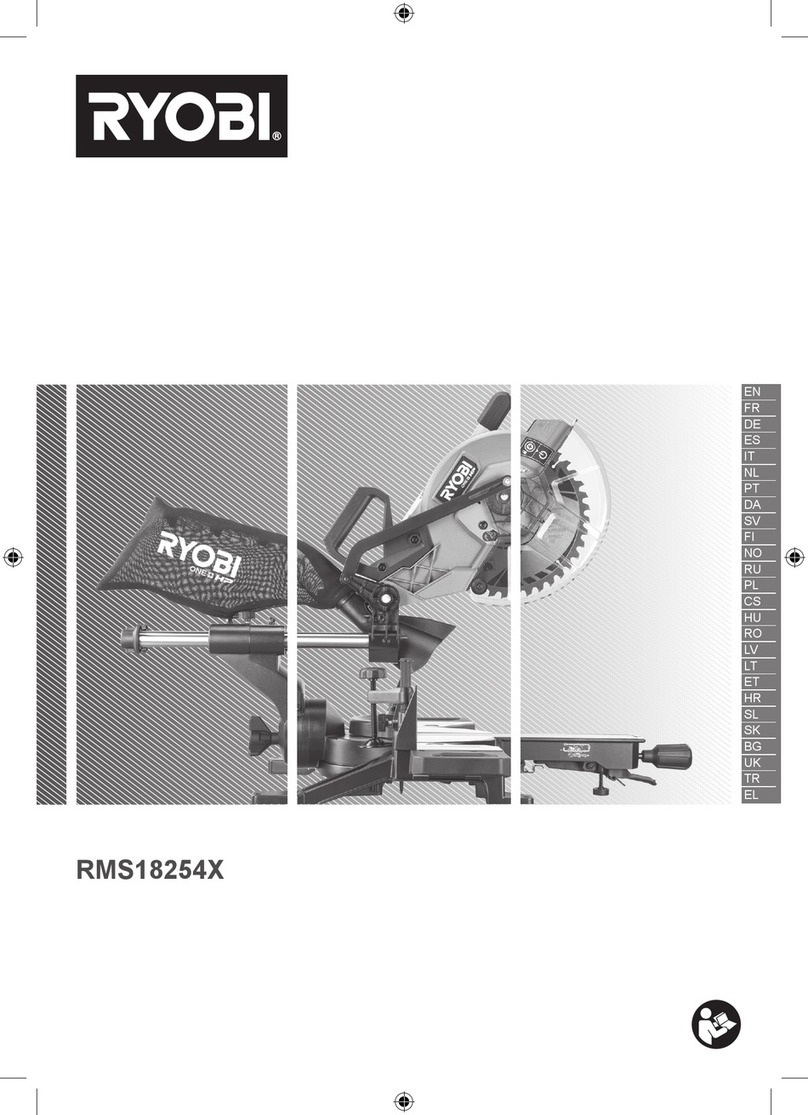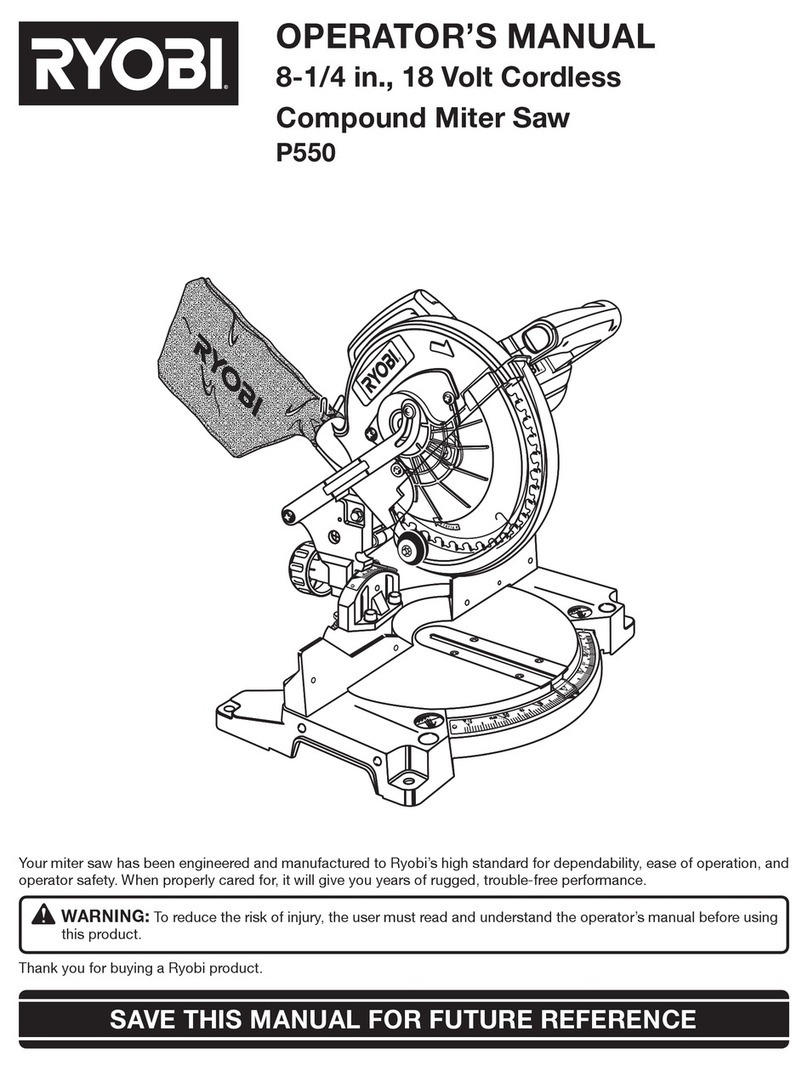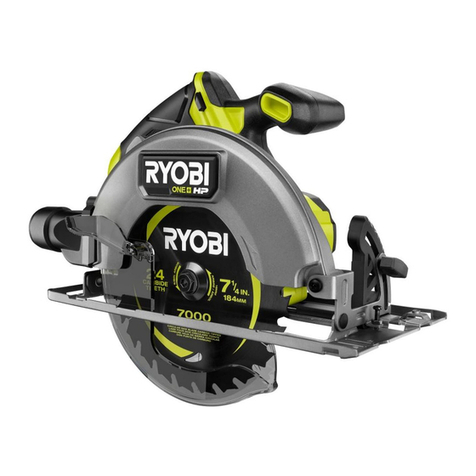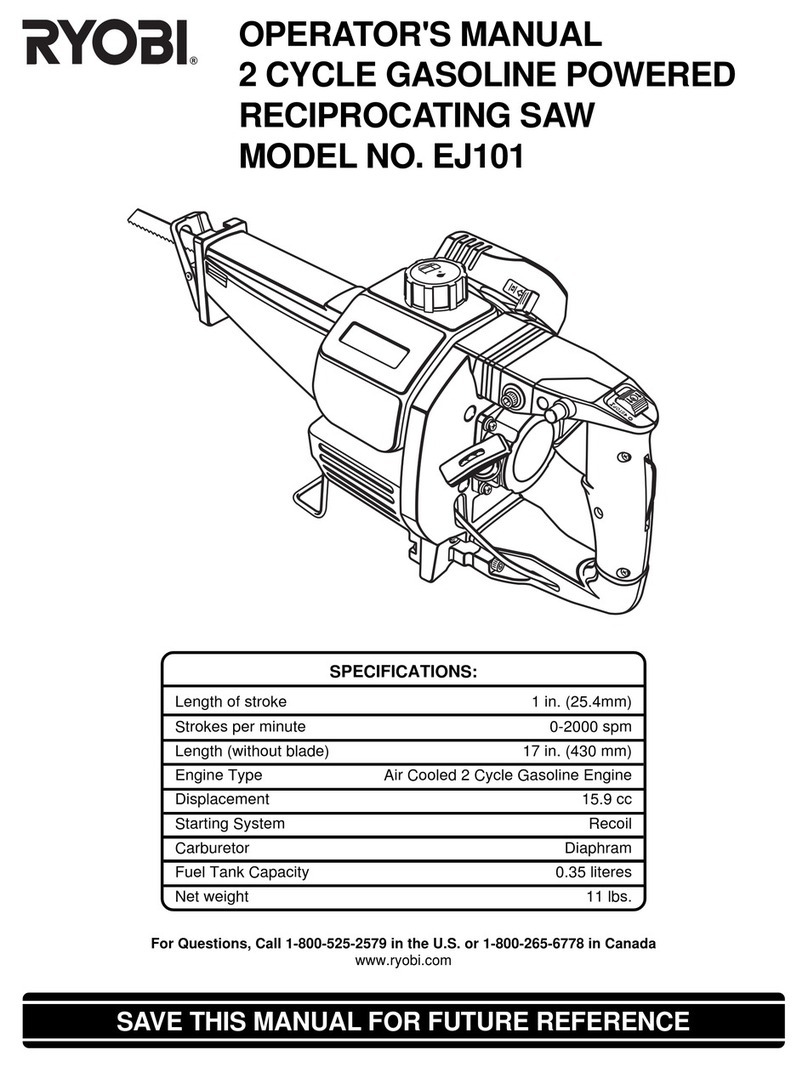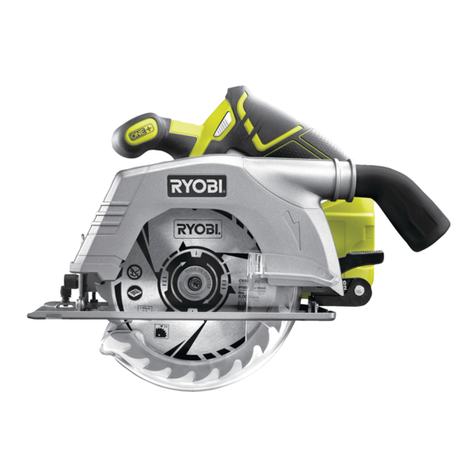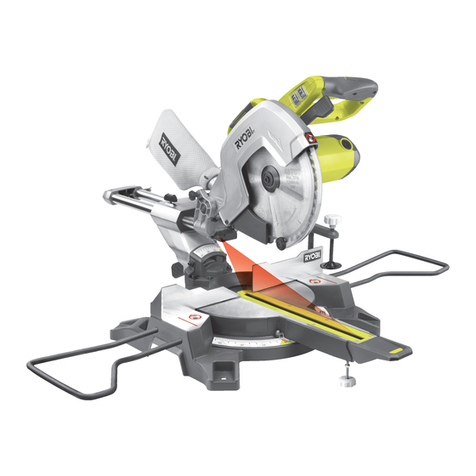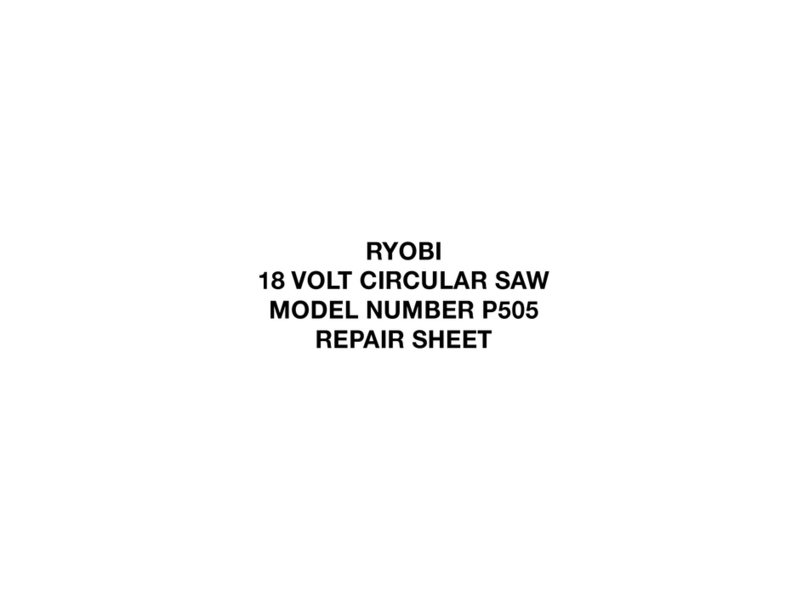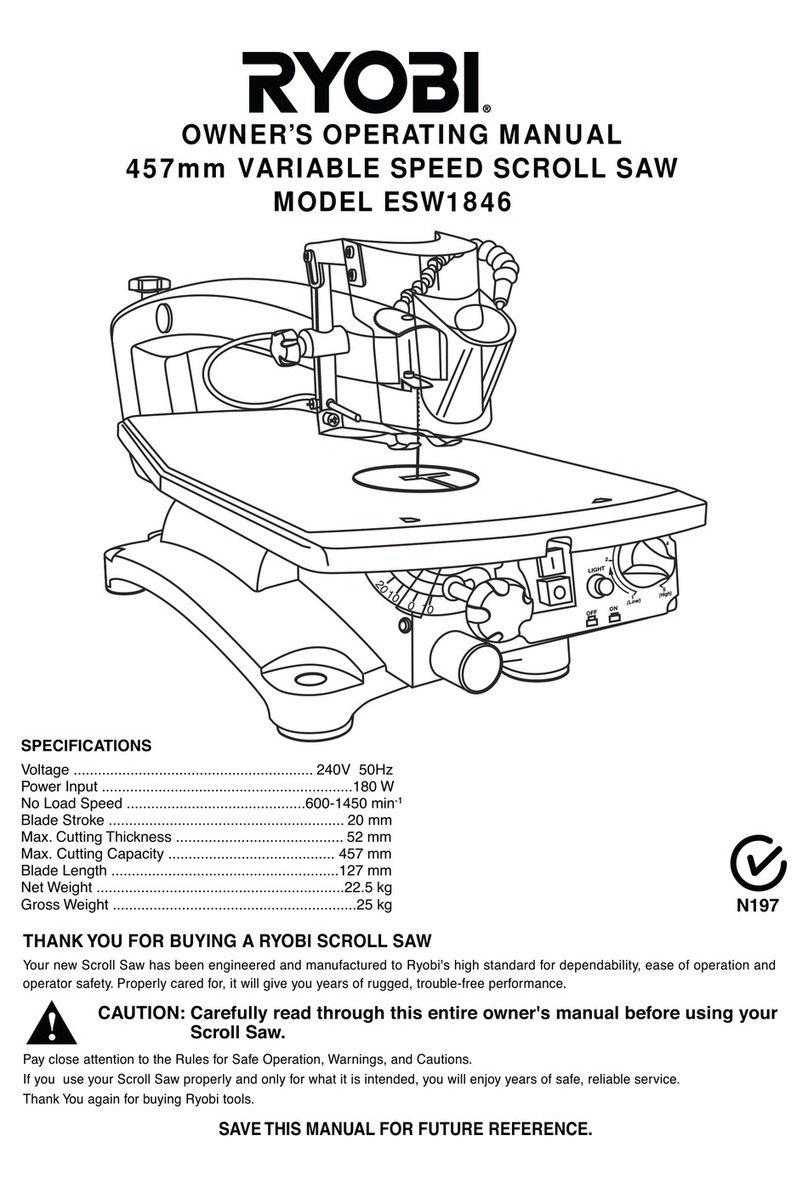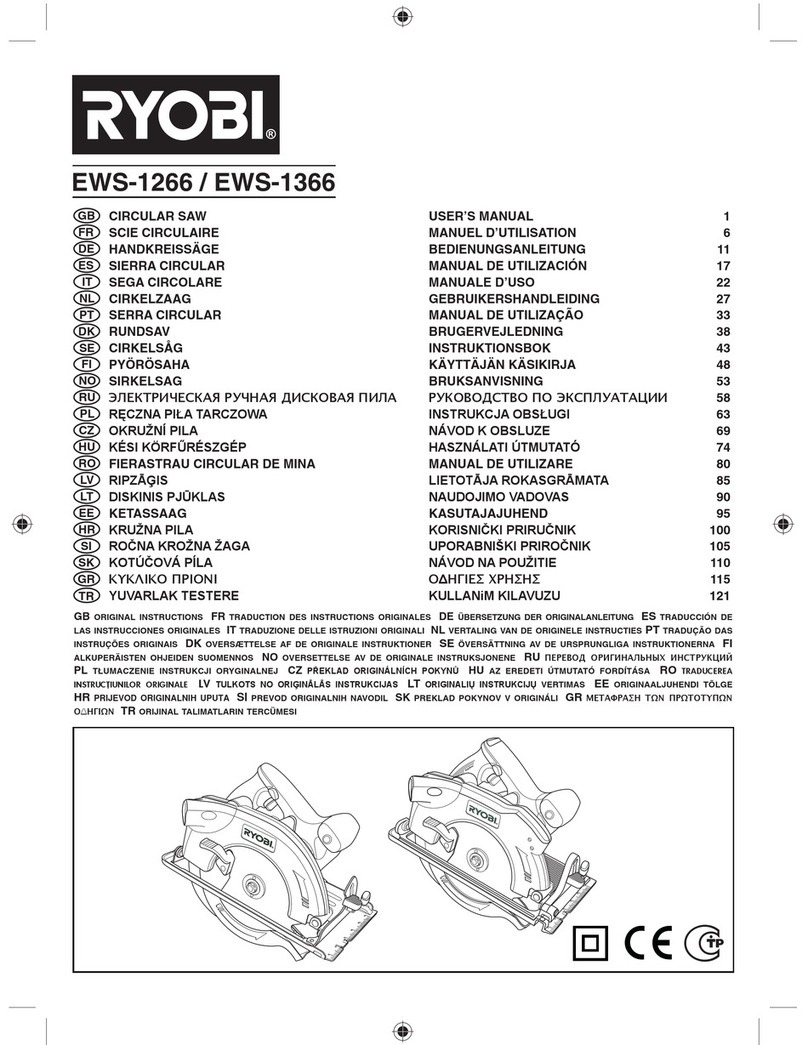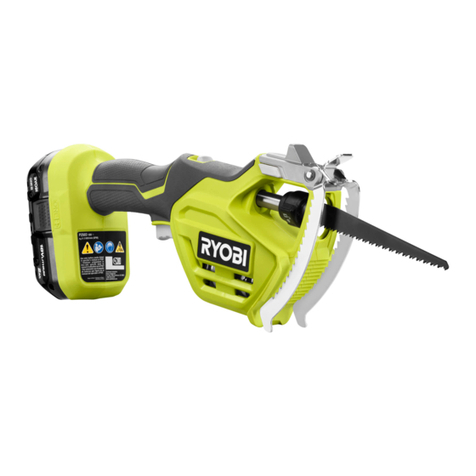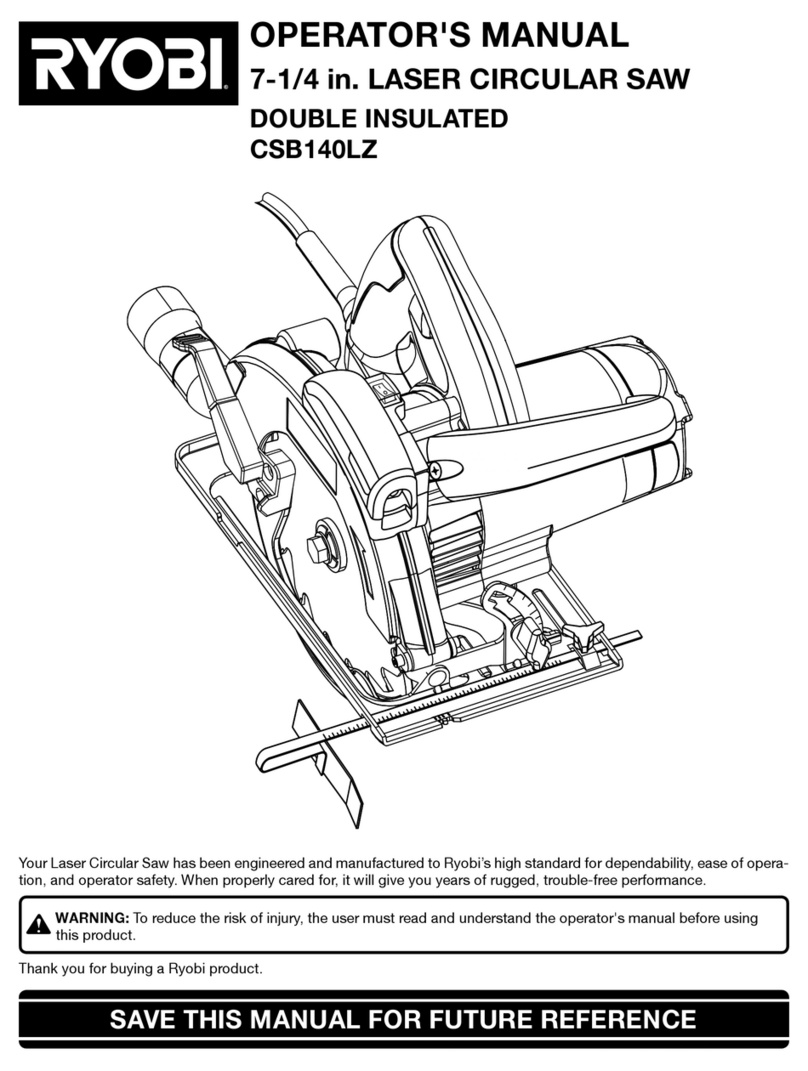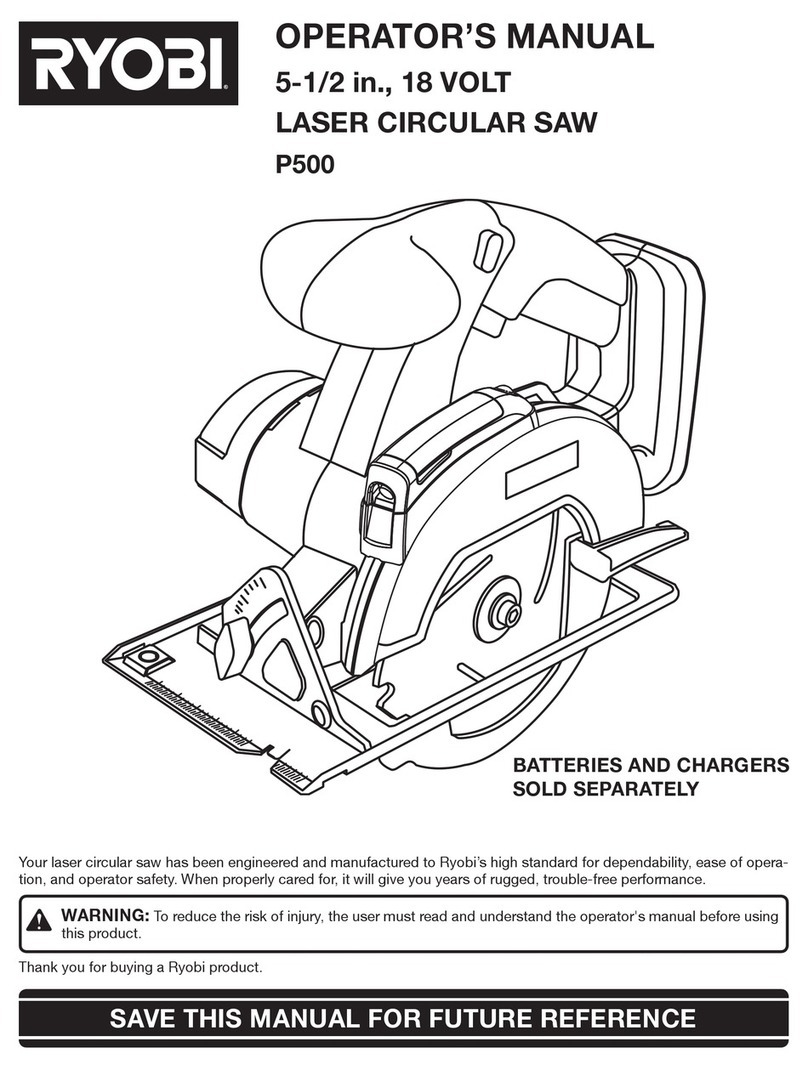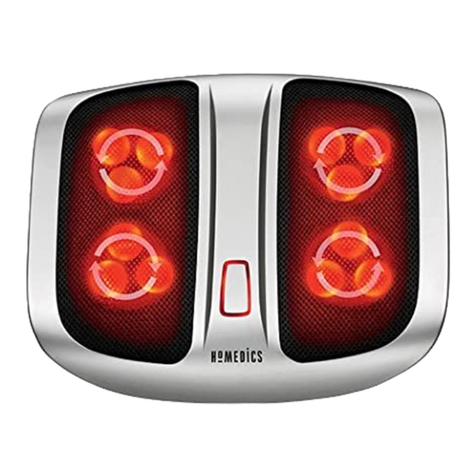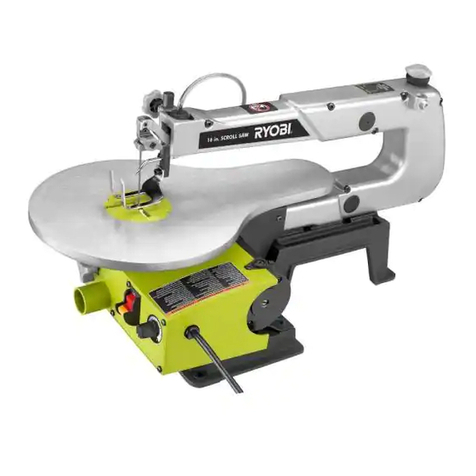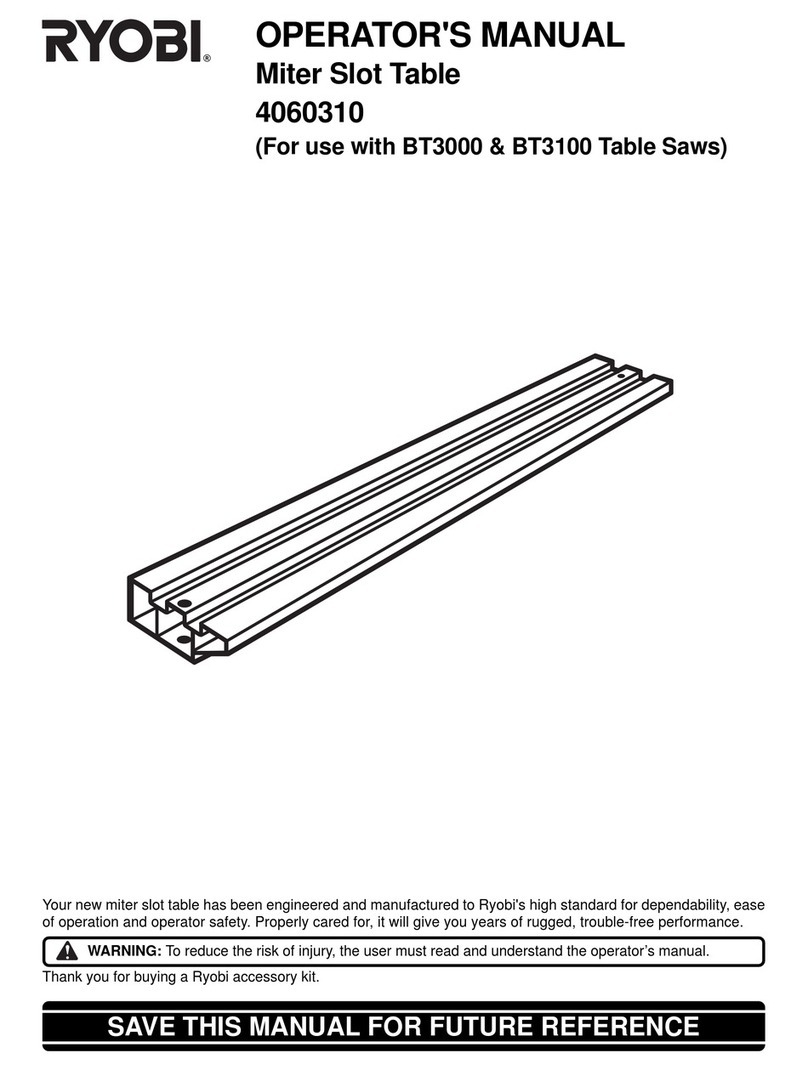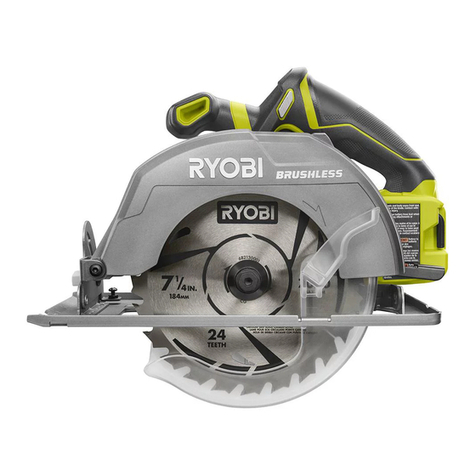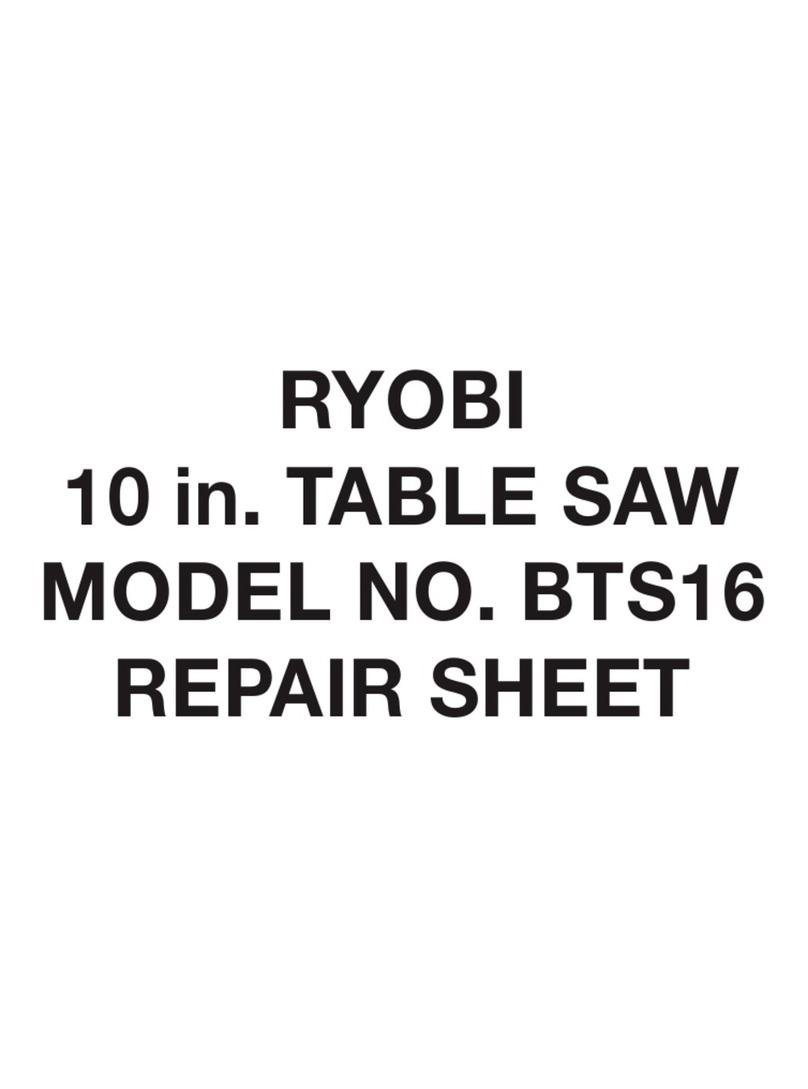
Page 4
Safe operation of this power tool requires that you read and
understand this operator's manual and all labels affixed to
the tool. Safety is a combination of common sense, staying
alert, and knowing how your miter saw works.
READ ALL INSTRUCTIONS
1. KNOW YOUR POWER TOOL. Read the operator's
manual carefully. Learn the saw's applications and
limitations as well as the specific potential hazards
related to this tool.
2. GUARD AGAINST ELECTRICAL SHOCK BY
PREVENTING BODY CONTACT WITH GROUNDED
SURFACES. For example; pipes, radiators, ranges,
refrigerator enclosures.
3. KEEPGUARDS IN PLACEandingoodworkingorder.
4. KEEP THE WORK AREA CLEAN. Cluttered work
areas and work benches invite accidents. DO NOT
leave tools or pieces of wood on the saw while it is in
operation.
5. DONOTUSEINDANGEROUSENVIRONMENTS.Do
not use power tools near gasoline or other flammable
liquids, in damp or wet locations, or expose them to
rain. Keep the work area well lit.
6. KEEP CHILDREN AND VISITORS AWAY. All visitors
shouldwearsafetyglassesandbekeptasafedistance
from work area. Do not let visitors contact tool or
extension cord while operating.
7. MAKE WORKSHOP CHILD-PROOF with padlocks
and master switches, or by removing starter keys.
8. DO NOT FORCE THE TOOL. It will do the job better
and safer at the rate for which it was designed.
9. USE THE RIGHT TOOL. Do not force the tool or
attachmenttodoajobitwasnotdesignedfor.Don'tuse
it for a purpose not intended.
10. DRESS PROPERLY. Do not wear loose clothing,
gloves, neckties, rings, bracelets, or other jewelry.
They can get caught and draw you into moving parts.
Rubberglovesandnonslipfootweararerecommended
when working outdoors. Also wear protective hair
covering to contain long hair.
11. ALWAYS WEAR SAFETY GLASSES WITH SIDE
SHIELDS. Everyday eyeglasses have only impact-
resistant lenses; they are NOT safety glasses.
12. PROTECT YOUR LUNGS. Wear a face or dust mask
if the cutting operation is dusty.
13. PROTECTYOUR HEARING. Wear hearingprotection
during extended periods of operation.
14. DONOTABUSECORD.Neveryankcordtodisconnect
it from receptacle. Keep cord from heat, oil, and sharp
edges.
15. DO NOT OVERREACH. Keep proper footing and
balance at all times.
16. MAINTAINTOOLSWITHCARE.Keeptoolssharpand
clean for better and safer performance. Follow
instructions for lubricating and changing accessories.
17. DISCONNECT ALL TOOLS. When not in use, before
servicing,or when changing attachments,blades, bits,
cutters, etc., all tools should be disconnected.
18. REMOVEADJUSTINGKEYSANDWRENCHES. Get
in the habit of checking to see that hex keys and
adjustingwrenchesareremovedfromtoolbeforeturning
it on.
19. AVOID ACCIDENTAL STARTING. Be sure switch is
off when plugging in.
20. USE THE PROPER EXTENSION CORD. Make sure
yourextensioncordisingoodcondition.Whenusingan
extension cord, be sure to use one heavy enough to
carrythe current yourproduct will draw.An undersized
cordwill cause a dropin line voltage resultingin loss of
powerandoverheating.Awiregagesize(A.W.G.)ofat
least 14 is recommended for an extension cord 25 feet
or less in length. If in doubt, use the next heavier gage.
The smaller the gage number, the heavier the cord.
21. USE OUTDOOR EXTENSION CORDS. When tool is
usedoutdoors,useonlyextensioncordswithapproved
ground connection that are intended for use outdoors
and so marked.
22. KEEP BLADES CLEAN AND SHARP. Sharp blades
minimize stalling and kickback.
23. KEEP HANDS AWAY FROM CUTTING AREA. Keep
hands away from blades. Do not reach underneath
work or around or under the blade while blade is
rotating. Do not attempt to remove cut material when
blade is moving.
WARNING: Blades coast after turn off.
24. NEVER USE IN AN EXPLOSIVE ATMOSPHERE.
Normal sparking of the motor could ignite fumes.
25. INSPECT TOOL CORDS PERIODICALLY and if
damaged,haverepairedatyournearestAUTHORIZED
SERVICE CENTER. Stay constantly aware of cord
location and keep it well away from the rotating blade.
26. INSPECT EXTENSION CORDS PERIODICALLY and
replace if damaged.
27. KEEP TOOL DRY, CLEAN, AND FREE FROM OIL
ANDGREASE. Alwaysuseacleanclothwhencleaning.
Never use brake fluids, gasoline, petroleum-based
products, or any solvents to clean tool.
28. STAY ALERT AND EXERCISE CONTROL. Watch
what you are doing and use common sense. Do not
operate tool when you are tired. Do not rush.
RULES FOR SAFE OPERATION
